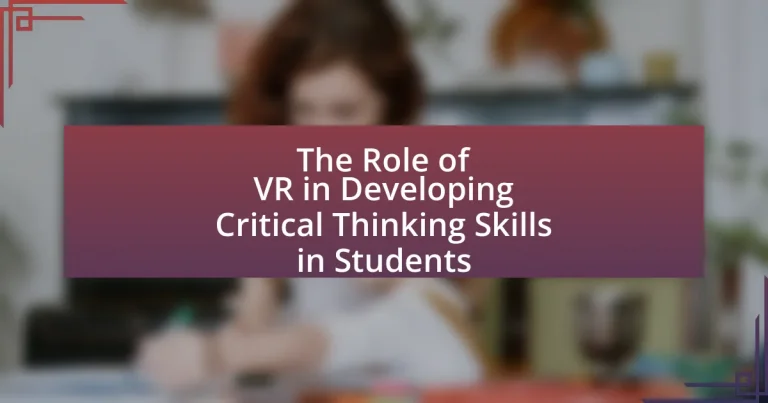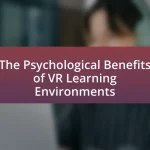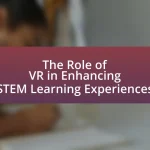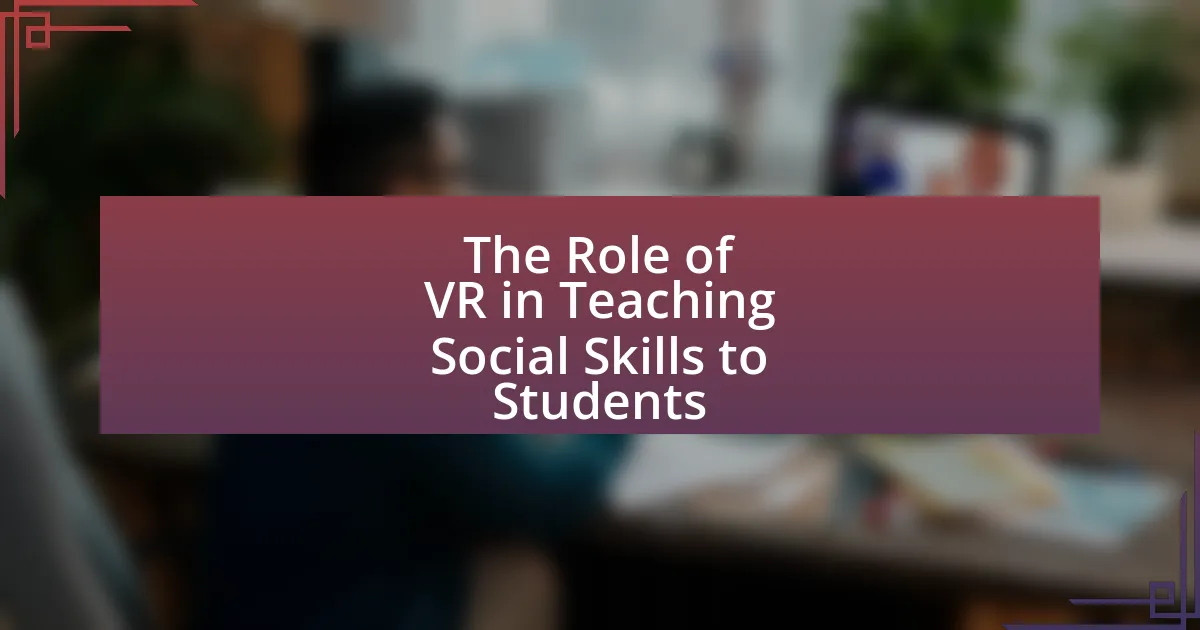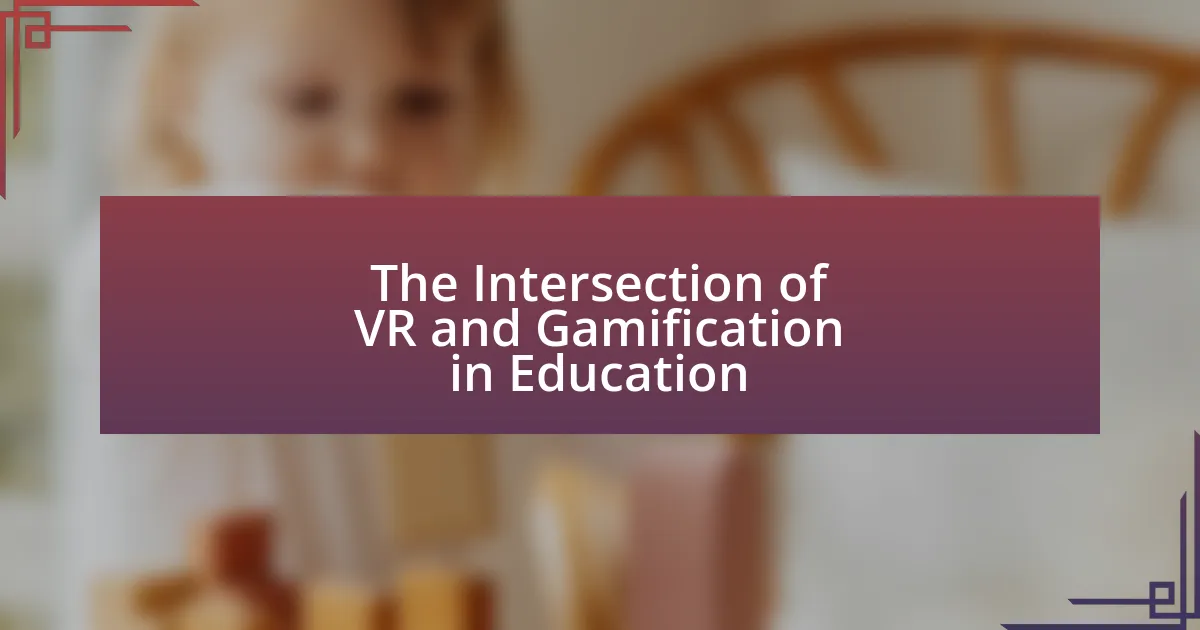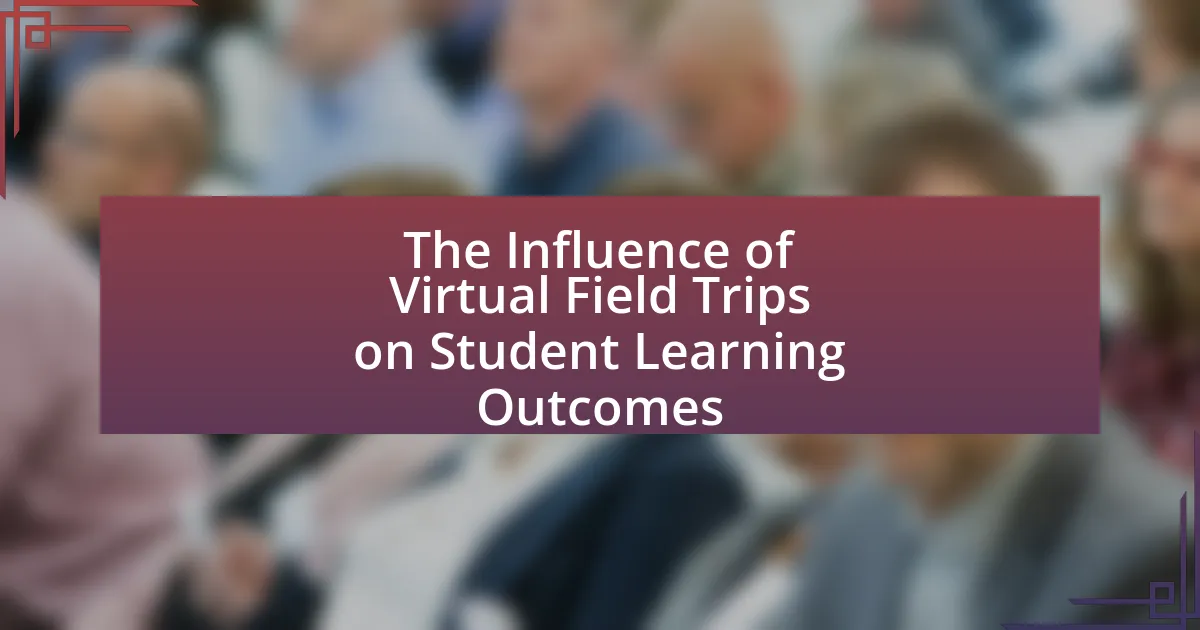The article examines the role of Virtual Reality (VR) in developing critical thinking skills among students. It highlights how immersive and interactive VR environments enhance experiential learning, enabling students to engage in problem-solving, decision-making, and analytical tasks. Research findings indicate that VR applications, such as simulations and serious games, significantly improve cognitive flexibility, creativity, and overall academic performance. The article also addresses the challenges educators face in implementing VR technology, including costs and technical issues, while providing best practices for effective integration into teaching strategies. Additionally, it explores future trends in VR education and its potential to transform educational methodologies.
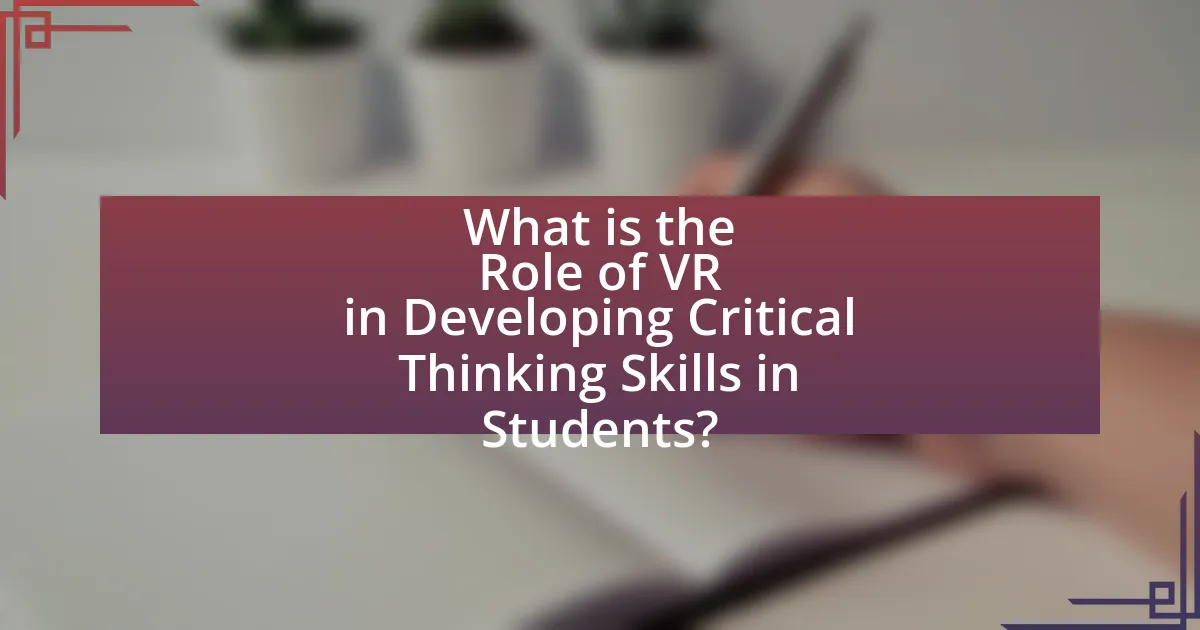
What is the Role of VR in Developing Critical Thinking Skills in Students?
Virtual Reality (VR) plays a significant role in developing critical thinking skills in students by providing immersive, interactive environments that enhance experiential learning. Through VR, students engage in simulations that require problem-solving, decision-making, and analytical skills, fostering a deeper understanding of complex concepts. Research indicates that VR experiences can improve cognitive flexibility and creativity, essential components of critical thinking. For instance, a study published in the journal “Computers & Education” by Mikropoulos and Natsis (2011) found that students using VR for learning demonstrated higher levels of engagement and critical thinking compared to traditional learning methods. This evidence supports the assertion that VR effectively cultivates critical thinking skills in educational settings.
How does VR technology facilitate critical thinking in educational settings?
VR technology facilitates critical thinking in educational settings by providing immersive, interactive experiences that engage students in complex problem-solving scenarios. These virtual environments allow learners to explore concepts in a hands-on manner, encouraging them to analyze situations, make decisions, and reflect on the outcomes. Research indicates that students using VR for learning demonstrate improved critical thinking skills, as they are required to evaluate information and consider multiple perspectives in real-time. For example, a study published in the Journal of Educational Technology & Society found that students who participated in VR simulations scored significantly higher on critical thinking assessments compared to those in traditional learning environments. This evidence supports the effectiveness of VR technology in enhancing critical thinking among students.
What specific VR applications are used to enhance critical thinking?
Specific VR applications that enhance critical thinking include “Immersive Learning Environments,” “Virtual Reality Simulations,” and “Serious Games.” Immersive Learning Environments, such as Engage and vSpatial, provide interactive scenarios that require students to analyze situations and make decisions, fostering critical thinking. Virtual Reality Simulations, like Labster, allow students to conduct experiments in a virtual lab, encouraging problem-solving and analytical skills. Serious Games, such as “The Night Cafe,” challenge players to navigate complex narratives and make choices that impact outcomes, promoting reflective thinking. These applications have been shown to improve cognitive skills by engaging users in active learning experiences that require evaluation and synthesis of information.
How does immersive experience in VR contribute to cognitive development?
Immersive experiences in virtual reality (VR) significantly enhance cognitive development by providing interactive and engaging environments that stimulate learning. These experiences promote active participation, which has been shown to improve information retention and understanding. Research indicates that VR can enhance spatial awareness, problem-solving skills, and critical thinking by allowing users to navigate complex scenarios and make decisions in real-time. For instance, a study by Mikropoulos and Natsis (2011) found that students using VR for learning exhibited higher levels of engagement and better performance in tasks requiring critical thinking compared to traditional learning methods. This evidence supports the assertion that immersive VR experiences are effective tools for fostering cognitive growth in educational settings.
Why is critical thinking important for students?
Critical thinking is important for students because it enables them to analyze information, make informed decisions, and solve problems effectively. This skill is essential in an increasingly complex world where students encounter diverse perspectives and vast amounts of information. Research indicates that students who engage in critical thinking demonstrate improved academic performance and better prepare for real-world challenges. For instance, a study published in the Journal of Educational Psychology found that critical thinking skills correlate with higher grades and enhanced learning outcomes. Thus, fostering critical thinking in students equips them with the necessary tools to navigate their educational and professional futures successfully.
What are the key components of critical thinking skills?
The key components of critical thinking skills include analysis, evaluation, inference, explanation, and problem-solving. Analysis involves breaking down complex information into manageable parts to understand its structure. Evaluation refers to assessing the credibility and relevance of information sources. Inference is the ability to draw logical conclusions from available data. Explanation entails clearly articulating reasoning and justifying conclusions. Problem-solving involves identifying solutions to complex issues through systematic approaches. These components are essential for effective decision-making and reasoning in various contexts, including educational settings where virtual reality can enhance engagement and understanding.
How do critical thinking skills impact academic performance?
Critical thinking skills significantly enhance academic performance by enabling students to analyze information, evaluate arguments, and solve problems effectively. Research indicates that students who engage in critical thinking demonstrate improved comprehension and retention of material, leading to higher grades and better overall academic outcomes. For instance, a study published in the Journal of Educational Psychology found that students trained in critical thinking scored 20% higher on standardized tests compared to their peers who did not receive such training. This correlation underscores the importance of critical thinking as a foundational skill that directly influences academic success.
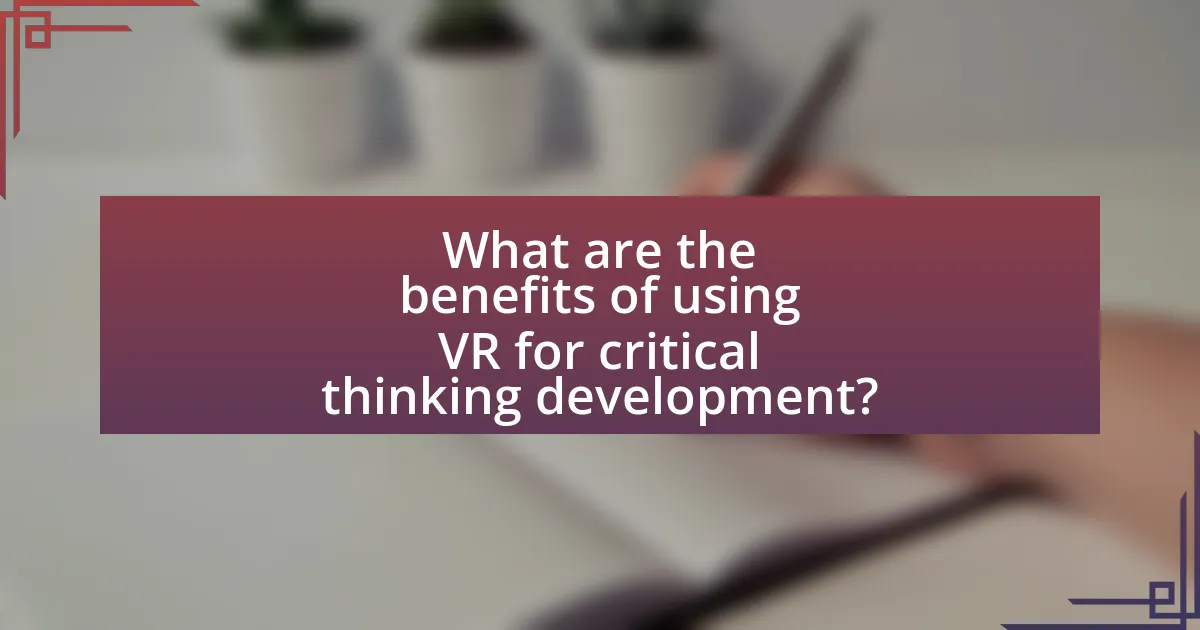
What are the benefits of using VR for critical thinking development?
Using virtual reality (VR) for critical thinking development enhances engagement, promotes experiential learning, and fosters problem-solving skills. VR immerses students in realistic scenarios that require them to analyze information, make decisions, and reflect on outcomes, thereby strengthening their critical thinking abilities. Research indicates that immersive environments can improve cognitive skills; for instance, a study by Mikropoulos and Natsis (2011) found that students using VR simulations demonstrated higher levels of critical thinking compared to traditional learning methods. This evidence supports the effectiveness of VR in cultivating essential cognitive skills necessary for critical thinking development.
How does VR promote engagement and motivation among students?
VR promotes engagement and motivation among students by providing immersive and interactive learning experiences that enhance their involvement in educational activities. This technology allows students to explore complex concepts in a simulated environment, making learning more relatable and enjoyable. Research indicates that immersive experiences in VR can lead to increased retention of information and higher levels of interest in the subject matter. For instance, a study published in the journal “Computers & Education” by Mikropoulos and Natsis (2011) found that students using VR for learning demonstrated significantly higher motivation and engagement compared to traditional learning methods. This evidence supports the assertion that VR effectively fosters a more engaging and motivating educational experience for students.
What role does interactivity play in VR learning environments?
Interactivity is crucial in VR learning environments as it enhances engagement and facilitates active learning. By allowing students to manipulate virtual objects and navigate immersive scenarios, interactivity promotes experiential learning, which is essential for developing critical thinking skills. Research indicates that interactive VR experiences lead to deeper cognitive processing, as students are more likely to analyze, evaluate, and synthesize information when they actively participate in their learning. For instance, a study by Mikropoulos and Natsis (2011) found that students who engaged in interactive VR simulations demonstrated improved problem-solving abilities compared to those in traditional learning settings. This evidence underscores the significant role of interactivity in fostering critical thinking through immersive educational experiences.
How can VR simulations provide real-world problem-solving experiences?
VR simulations can provide real-world problem-solving experiences by immersing users in realistic scenarios that require critical thinking and decision-making. These simulations allow students to engage with complex problems in a controlled environment, where they can experiment with different strategies and observe the outcomes of their actions. Research indicates that immersive learning environments, such as those created by VR, enhance cognitive engagement and retention of information, leading to improved problem-solving skills. For instance, a study published in the Journal of Educational Psychology found that students who participated in VR-based learning demonstrated a 30% increase in problem-solving abilities compared to traditional learning methods. This evidence supports the effectiveness of VR simulations in fostering real-world problem-solving experiences.
What challenges might educators face when implementing VR in the classroom?
Educators may face several challenges when implementing VR in the classroom, including high costs, technical issues, and a lack of training. The financial investment required for VR hardware and software can be prohibitive, with quality headsets costing several hundred dollars each, which may limit accessibility for some schools. Technical issues, such as software glitches or hardware malfunctions, can disrupt lessons and hinder the learning experience. Additionally, many educators may lack the necessary training to effectively integrate VR into their teaching practices, which can lead to underutilization of the technology. Research indicates that without proper professional development, the potential benefits of VR in enhancing critical thinking skills may not be fully realized.
How can technical issues affect the learning experience with VR?
Technical issues can significantly disrupt the learning experience with virtual reality (VR) by causing interruptions, reducing engagement, and hindering comprehension. For instance, if a VR system experiences lag or crashes, students may lose focus and become frustrated, which can detract from their ability to think critically about the material being presented. Research indicates that 70% of users report that technical difficulties negatively impact their immersion and learning outcomes in VR environments. Additionally, inconsistent hardware performance can lead to a lack of accessibility for all students, further exacerbating disparities in learning experiences.
What are the potential costs associated with VR technology in education?
The potential costs associated with VR technology in education include hardware expenses, software licensing fees, and ongoing maintenance costs. Hardware costs can range from $300 to $1,000 per VR headset, depending on the quality and specifications, while software licensing can add an additional $1,000 to $10,000 annually for educational applications. Furthermore, institutions may incur maintenance costs for technical support and updates, which can average around $500 to $2,000 per year. These financial considerations highlight the significant investment required for effective implementation of VR in educational settings.
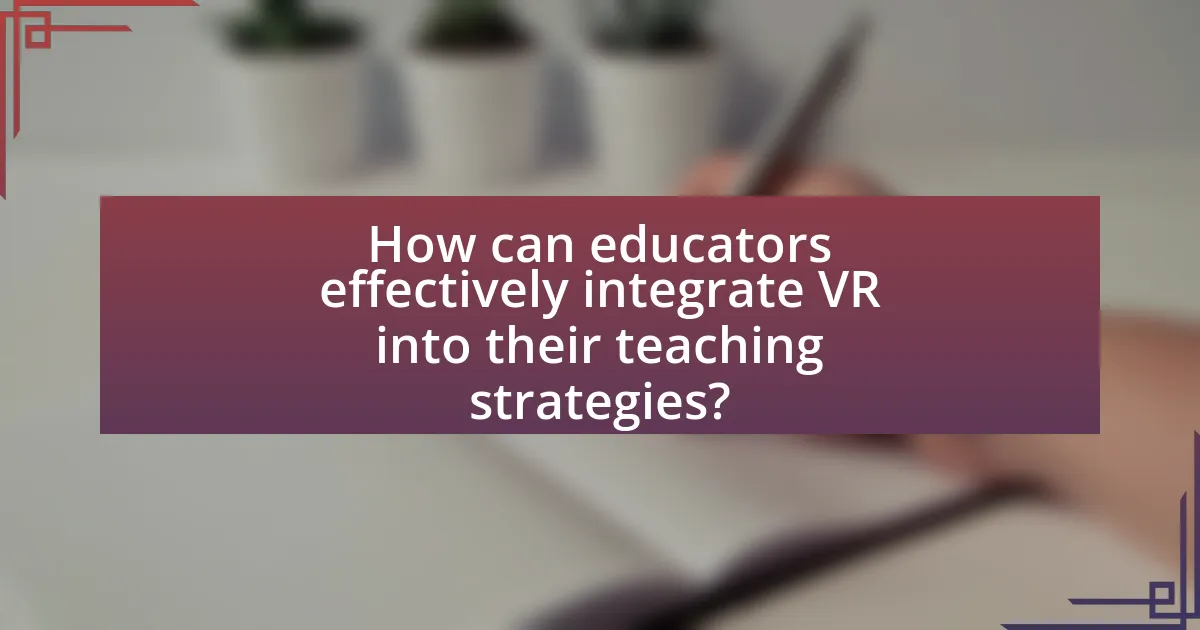
How can educators effectively integrate VR into their teaching strategies?
Educators can effectively integrate VR into their teaching strategies by designing immersive experiences that align with curriculum objectives and promote active learning. For instance, VR can simulate real-world scenarios, allowing students to engage in problem-solving and critical thinking exercises that are relevant to their studies. Research indicates that students who participate in VR-based learning demonstrate improved engagement and retention of information, as evidenced by a study published in the Journal of Educational Technology & Society, which found that 85% of students reported enhanced understanding of complex concepts through VR experiences. By incorporating VR into lessons, educators can create a dynamic learning environment that fosters critical thinking skills and encourages collaboration among students.
What best practices should teachers follow when using VR for critical thinking?
Teachers should follow best practices such as integrating VR experiences with guided discussions to enhance critical thinking. By facilitating post-VR reflection sessions, educators can encourage students to analyze their experiences, fostering deeper understanding and critical evaluation of the content. Research indicates that immersive VR environments can significantly improve engagement and cognitive skills, as shown in studies like “The Impact of Virtual Reality on Learning Outcomes” by Mikropoulos and Natsis, which highlights the effectiveness of VR in promoting analytical skills. Additionally, teachers should design VR activities that require problem-solving and decision-making, ensuring that students actively participate in their learning process.
How can educators assess the effectiveness of VR in developing critical thinking?
Educators can assess the effectiveness of VR in developing critical thinking by utilizing pre- and post-intervention assessments that measure critical thinking skills. These assessments can include standardized tests, performance tasks, and reflective journals that evaluate students’ ability to analyze, evaluate, and create based on their VR experiences. Research indicates that immersive VR environments can enhance engagement and cognitive load, leading to improved critical thinking outcomes, as evidenced by studies such as “The Impact of Virtual Reality on Critical Thinking Skills” published in the Journal of Educational Technology & Society, which found a significant increase in critical thinking scores among students who participated in VR-based learning compared to traditional methods.
What resources are available for teachers to learn about VR integration?
Teachers can access various resources to learn about VR integration, including online courses, webinars, and educational platforms. Websites like Coursera and edX offer courses specifically focused on VR in education, while organizations such as ISTE provide webinars and professional development opportunities. Additionally, resources like the “Virtual Reality in Education” guide by the International Society for Technology in Education (ISTE) outline best practices and case studies. These resources are designed to equip educators with the knowledge and skills necessary to effectively implement VR technology in their classrooms, enhancing critical thinking skills among students.
What future trends can we expect in the use of VR for education?
Future trends in the use of VR for education include increased personalization of learning experiences, enhanced collaboration among students, and the integration of artificial intelligence to adapt content to individual learning styles. Personalization will allow students to engage with material that suits their unique needs, thereby fostering critical thinking skills more effectively. Enhanced collaboration will enable students to work together in virtual environments, promoting teamwork and problem-solving abilities. The integration of AI will facilitate real-time feedback and assessment, helping educators tailor instruction to improve student outcomes. These trends are supported by research indicating that immersive learning environments significantly enhance engagement and retention, ultimately leading to improved critical thinking skills in students.
How might advancements in VR technology further enhance critical thinking skills?
Advancements in VR technology can enhance critical thinking skills by providing immersive, interactive environments that simulate real-world scenarios. These environments encourage students to engage in problem-solving and decision-making processes, fostering analytical thinking. For instance, studies have shown that VR simulations in educational settings lead to improved cognitive skills, as students must evaluate information, consider multiple perspectives, and reflect on their choices in a dynamic context. Research by Mikropoulos and Natsis (2011) indicates that VR can significantly improve spatial reasoning and critical analysis, essential components of critical thinking.
What role will VR play in the evolution of educational methodologies?
Virtual Reality (VR) will significantly enhance educational methodologies by providing immersive, interactive learning experiences that promote critical thinking skills. VR allows students to engage in realistic simulations and scenarios, enabling them to apply theoretical knowledge in practical contexts. For instance, a study by Mikropoulos and Natsis (2011) demonstrated that VR environments improve students’ problem-solving abilities and foster deeper understanding through experiential learning. This immersive approach encourages active participation, collaboration, and exploration, which are essential components of critical thinking development.
What practical tips can educators use to maximize VR’s impact on critical thinking?
Educators can maximize VR’s impact on critical thinking by integrating immersive experiences that encourage problem-solving and reflection. For instance, using VR simulations that present complex scenarios allows students to engage in decision-making processes, fostering analytical skills. Research indicates that immersive environments enhance cognitive engagement, as demonstrated in a study by Mikropoulos and Natsis (2011), which found that students exposed to VR learning environments showed improved critical thinking abilities compared to traditional methods. Additionally, incorporating collaborative VR activities can promote discussion and peer feedback, further enhancing critical thinking through diverse perspectives.
